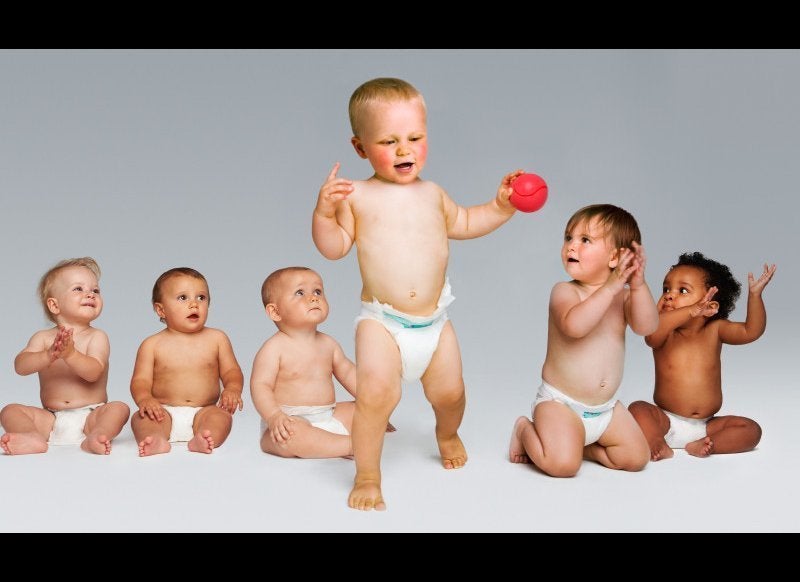
By Paul Gabrielsen
For everyone who's looked into an infant's sparkling eyes and wondered what goes on in its little fuzzy head, there's now an answer. New research shows that babies display glimmers of consciousness and memory as early as 5 months old.
For decades, neuroscientists have been searching for an unmistakable signal of consciousness in electrical brain activity. Such a sign could determine whether minimally conscious or anesthetized adults are aware—and when consciousness begins in babies.
Studies on adults show a particular pattern of brain activity: When your senses detect something, such as a moving object, the vision center of your brain activates, even if the object goes by too fast for you to notice. But if the object remains in your visual field for long enough, the signal travels from the back of the brain to the prefrontal cortex, which holds the image in your mind long enough for you to notice. Scientists see a spike in brain activity when the senses pick something up, and another signal, the "late slow wave," when the prefrontal cortex gets the message. The whole process takes less than one-third of a second.
Researchers in France wondered if such a two-step pattern might be present in infants. The team monitored infants' brain activity through caps fitted with electrodes. More than 240 babies participated, but two-thirds were too squirmy for the movement-sensitive caps. The remaining 80 (ages 5 months, 12 months, or 15 months) were shown a picture of a face on a screen for a fraction of a second.
Cognitive neuroscientist Sid Kouider of CNRS, the French national research agency, in Paris watched for swings in electrical activity, called event-related potentials (ERPs), in the babies' brains. In babies who were at least 1 year old, Kouider saw an ERP pattern similar to an adult's, but it was about three times slower. The team was surprised to see that the 5-month-olds also showed a late slow wave, although it was weaker and more drawn out than in the older babies. Kouider speculates that the late slow wave may be present in babies as young as 2 months.
This late slow wave may indicate conscious thought, Kouider and colleagues report online today in Science. The wave, feedback from the prefrontal cortex, suggests that the image is stored briefly in the baby's temporary "working memory." And consciousness, Kouider says, is composed of working memory.
The team displayed remarkable patience to gather data from infants, says cognitive neuroscientist Lawrence Ward of the University of British Columbia, Vancouver, in Canada, who was not involved in the study. However, the work, although well executed, is not the last word, he says. "I expect we'll find several different neural activity patterns to be correlated with consciousness."
Comparing infant brain waves to adult patterns is tricky, says Charles Nelson, a neuropsychologist at Harvard Medical School in Boston. "ERP components change dramatically over the first few years of life," he writes in an e-mail. "I would be reluctant to attribute the same mental operation (i.e., consciousness) in infants as in adults simply because of similar patterns of brain activity."
"He's right, the ERP components are not exactly the same as in adults," Kouider responds, but the ERP signature he saw had the same characteristics.
Kouider next hopes to explore how these signals of consciousness connect to learning, especially language development. "We make the assumption that babies are learning very quickly and that they're fully unconscious of what they learn," Kouider says. "Maybe that's not true."
